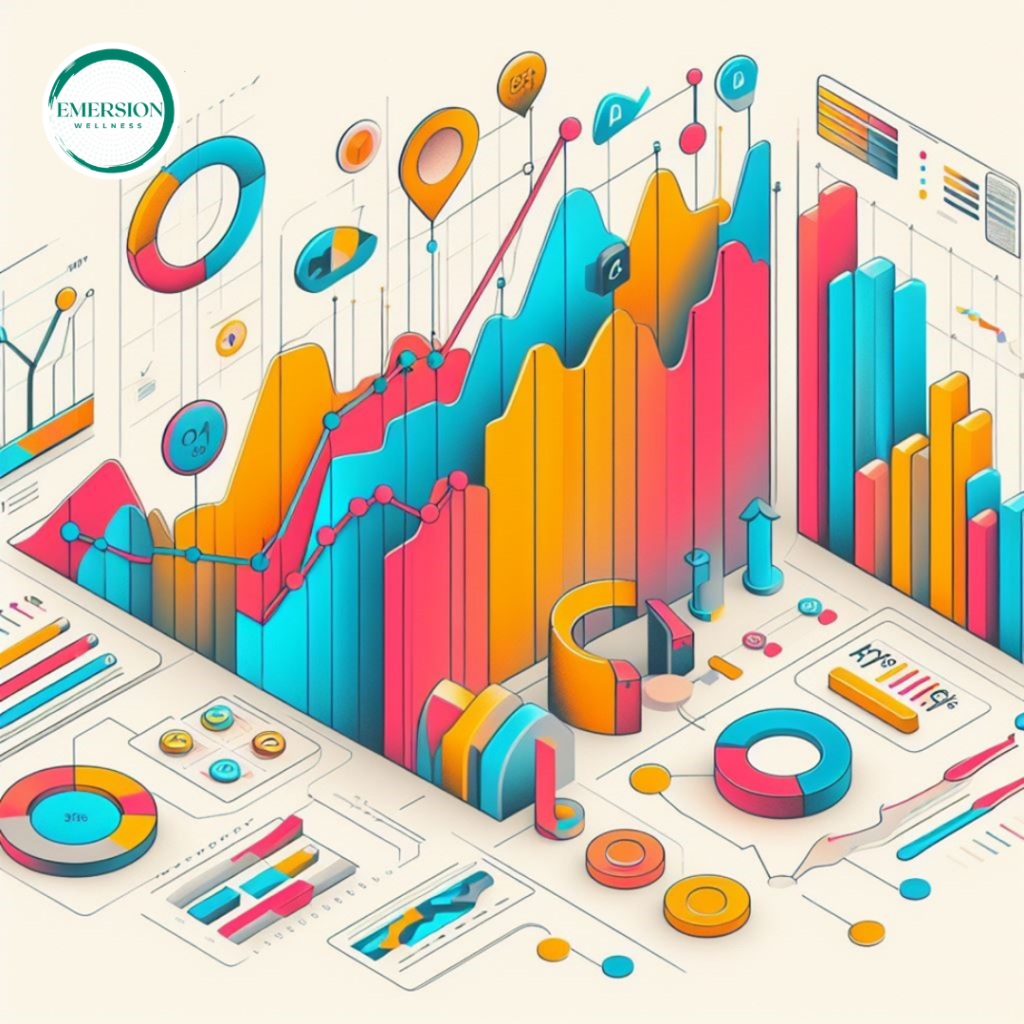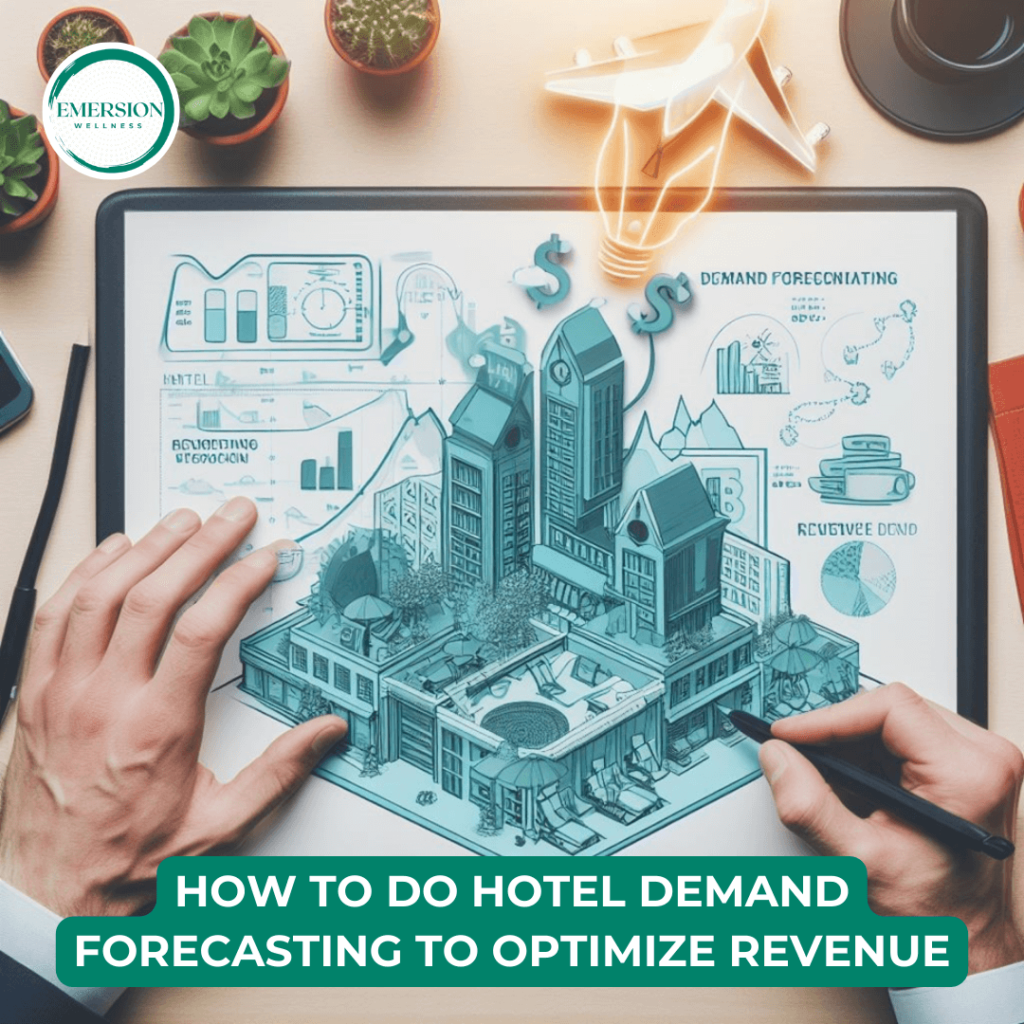As a hotel revenue manager, one of the job's most critical yet challenging aspects is accurately forecasting demand. A reliable system to predict booking volumes enables you to optimize pricing, staffing, inventory allocation, and overall revenue management strategy. Getting demand forecasting wrong can lead to missed revenue opportunities, poor customer experiences, and suboptimal profit margins.
In today's complex and fast-changing hospitality landscape, relying solely on traditional methods like picking up the phone or gut instinct is no longer enough. To stay competitive and maximize revenues, hotel managers need access to predictive analytics and market intelligence powered by artificial intelligence (AI) and machine learning.
The good news is that technology now allows us to forecast demand with far greater accuracy and lead time than ever. By leveraging real-time market data, insights from past trends, competitive intelligence, and predictive modeling, hoteliers can uncover future opportunities and risks 30-60-90+ days in advance.
Key Takeaways
- Accurate demand forecasting enables optimal revenue management decision-making
- Predictive analytics delivers more precise forecasts than traditional methods
- Market intelligence reveals trends across segments, channels, and competitors
- AI and machine learning drive continuous improvement in forecast accuracy
- Hotels that fail to adopt predictive methods will fall behind the competition
- Maximizing revenues in today's landscape requires a data-driven, future-focused approach
In this article, we will explore how hotels can utilize predictive market intelligence and analytics to master the art and science of demand forecasting. Follow along for tips and best practices on how to:
- Gather the right mix of historical and forward-looking data
- Harness AI and machine learning to improve forecasting
- Continuously monitor market signals and competitive dynamics
- Optimize pricing, overbooking, and inventory allocation
- Translate forecasts into sound revenue management strategies
Let's dive in!
Table of Contents
The Risks of Outdated Demand Forecasting Methods
Many hotel managers rely solely on minimal historical data and booking curves to forecast future demand. Some may glance at the same weeks last year or the pace of bookings. While past trends set a baseline, this approach is reactive and backward-looking.
Relying on primary booking curves leaves you vulnerable to missing signals of:
- Changes in source market demand: Historical seasons no longer predict future business. Travel patterns shift. New source markets emerge while others fade.
- Competitive supply changes: When neighboring hotels open, expand, or renovate, historical booking curves fail to capture erosion in your fair share.
- External events and volatility: Past trends miss one-off events driving demand spikes or dips. From weather events to policy changes, volatility is the new normal.
- Distribution channel mix changes: Each channel has distinct booking lead times and curves. Historical data becomes less reliable as demand shifts between OTAs, brand.com, and metasearch.
While picking up the phone to check on groups helps, this is time-consuming and reactive. Relying on gut feel, while valuable, leaves you prone to bias.
To maximize revenue, hotel managers need to evolve beyond past internal trends. The future of forecasting requires a data-driven, forward-looking approach powered by predictive intelligence and technology.

Foundations of Predictive Hotel Demand Forecasting
Predictive hotel demand forecasting leverages technology and modeling techniques to uncover demand risks and opportunities ahead of time. This enables proactive pricing optimization, staffing, budgeting, and overall revenue strategy.
The essential foundations include:
- Aggregating disparate internal data sources - Reservation systems, PMS, CRM, web analytics, and more contain clues on booking pace changes. Combining these data creates a single version of truth.
- Monitoring forward-looking market indicators - Predictive indicators like travel search trends, geo-fenced demand, competitive intelligence, and economic signals provide future demand visibility.
- Analyzing data for patterns using AI and machine learning - Advanced analytics techniques uncover non-intuitive patterns in complex data. This enhances accuracy.
- Translating forecasts into clear strategic recommendations - Technology is an enabler. Human expertise is still needed to contextualize predictions into innovative revenue management actions.
Adopting this future-focused, data-driven approach to forecasting empowers hotel managers to optimize decisions and financial performance.
AI and Machine Learning for Improved Demand Forecasting Accuracy
Harnessing the power of artificial intelligence (AI) and machine learning is vital to enhancing predictability and forecast accuracy. Some critical applications include:
- Predictive modeling: AI examines hundreds of demand drivers and detects non-linear patterns that even humans miss. Models become more precise through continuous learning.
- Automated data cleansing and normalization: This prepares messy real-world data for analysis. Machine learning also fills in missing data gaps.
- Multivariate correlation analysis: AI assesses how variables like events, weather, and competition interact and influence demand.
- Market segmentation: Machine learning automatically analyzes guest and booking data to cluster distinct segments and niches. Granular forecasts improve.
- Forecast benchmarking: Algorithms assess the accuracy of past predictions to enhance future reliability.
The raw power of AI and machine learning enables hoteliers to move from reactive to predictive revenue management. When combined with human domain expertise, AI drives continuous forecast optimization and precision.

Types of Data Driving Predictive Forecasts
Predictive modeling integrates historical booking data and forward-looking market indicators to enable anticipatory decision-making.
1. Historical data
- Prior years' demand patterns for each segment, channel, and month
- Booking curves showing channel mix changes over time
- Performance data like occupancy, ADR, RevPAR, and booking window
- Prior revenue management actions taken
2. Forward-looking data
- Search engine and website analytics on travel intent
- Tour operator and OTA booking trajectories
- Web reputation and sentiment analysis
- Competitor monitoring insights
- Events calendars and citywide demand forecasts
- Economic indicators, airlift changes, and exchange rates
- Local market intelligence on new demand drivers
By holistically monitoring both past internal data and external market indicators, hoteliers gain a future-focused forecast to drive decisions.
Monitoring the Market and Competition
Monitoring market dynamics and competitive forces enables hoteliers to recalibrate demand predictions continuously.
Some key signals to monitor include:
- Competitor website activity - Room rates, packages, promotions, and availability changes indicate evolving supply-demand dynamics.
- Channel management strategy shifts - Channels like OTAs sometimes pivot strategies, impacting demand routing.
- New local events, attractions, or infrastructure - Keeping an ear to the ground on upcoming developments provides advance notice to forecast peaks or new demand opportunities.
- Travel intent trends - Spikes or drops in travel searches for your city from crucial feeder markets imply shifts in consumer demand.
- Economic and political changes - Exchange rate swings, elections, policy shifts, or economic recessions directly alter travel budgets and booking decisions.
- Disruptions or crises - Unforeseen events require agile forecast adjustments from weather events to health pandemics.
Proactively monitoring macro and micro market forces enables hotel revenue managers to fine-tune predictive models continuously. This ensures demand forecasts align with emerging realities instead of stale historical data.
Setting Optimal Pricing and Inventory Controls
Sophisticated demand forecasts enable hotels to set optimal prices and inventory controls to maximize occupancy and rate performance.
Dynamic pricing
Accurately forecasting demand by market segment enables dynamic rate adjustments aligned to expected occupancies. Rates can be strategically lowered to stimulate additional demand for need periods. For peak periods, rate fences limit access to lower rates as demand intensifies.
Overbooking
Reliable demand forecasts enable revenue managers to overbook to strategically compensate for late cancellations and no-shows. Overbooking helps fill rooms that would otherwise go empty.
Allocation management
Segment-level demand forecasts empower hotels to allocate and reserve rooms for the highest-paying segments first. This avoids selling out too early to lower-rated components.
Length-of-stay controls
Forecasts by segment and channel reveal optimal minimum length-of-stay controls. This maximizes availability for higher-paying multi-night bookings.
With confident demand predictions, hotels move from reactive to proactive pricing and inventory controls that maximize revenue.

Translating Forecasts into Revenue Management Strategy
While data and analytics enable forecasting, human expertise is essential to translate predictions into smart revenue management decisions across pricing, overbooking, allocation, and promotions.
Here are some best practices to bridge the gap between forecasts and decisions:
- Evaluate predictive data within a competitive context - Compare forecast dynamics against competitors' historical and current performance.
- Assess forecast levers and risks - Which assumptions could swing forecasts up or down? How can we mitigate risks?
- Simulate different scenarios - Estimate potential strategies' revenue, occupancy and rate impact through what-if modeling.
- Implement ongoing optimization - Given all internal and external signals, what are the ideal short and long-term revenue management moves?
- Measure accurate predictive accuracy - Compare actual versus forecasted results to improve models continually.
While leveraging technology and analytics, human revenue managers must contextualize data, consider nuances, and derive strategies that maximize hotel performance.
Key Takeaways and Where to Begin
To wrap up, here are some key takeaways on how to enable predictive forecasting through market intelligence:
- Evolve beyond reactive methods – Go beyond booking pace, pick up calls, and gut feel to look ahead using data actively.
- Monitor history and leading indicators – Holistically incorporate internal and external data for insights.
- Apply automation through AI and machine learning – Let technology detect complex patterns that humans cannot, enabling precision.
- Continuously track competitive dynamics – Keep on top of market shifts to recalibrate forecast models.
- Translate forecasts into optimal pricing and inventory tactics – Let data guide strategies while human expertise contextualizes decisions.
- Measure true forecast accuracy – Assess past model performance to promote continuous improvement.
Ready to unlock the power of predictive market intelligence? Contact Emersion Wellness for a customized demo tailored to your hotel's needs. Emersion Wellness offers cutting-edge revenue optimization technology powered by predictive analytics, competitive intelligence, AI-driven recommendations, and advanced simulation tools.
Our predictive platform empowers hotels large and small to:
- Gain 30-60-90+ day visibility into booking dynamics across segments, channels, pace, and more
- Benchmark performance versus local and extended competitive sets
- Uncover risks, opportunities, and ideal actions across pricing, overbooking, campaigns, and channel management
- Simulate revenue outcomes of various strategies through what-if modeling
Let Emersion Wellness provide the data-driven insights and hotel revenue expertise needed to master predictive forecasting at your property. Contact us today to schedule a demo and take the first step toward driving revenue through predictive intelligence.
Frequently Asked Questions
What are the limitations of relying only on historical booking data to forecast demand?
Historical data lacks visibility into future events, competition, channel mix changes, and market volatility. This leaves hotels vulnerable to inaccurate forecasts.
What is the ideal forecasting horizon hotels should aim for?
Leading hotels forecast 30-60-90+ days out to enable proactive revenue optimization. Those relying only on 3-7 days lose opportunities.
How much can predictive modeling improve forecast accuracy over traditional methods?
Leading forecasting technologies can improve accuracy by 20-30%. This directly translates into incremental revenue optimization.
What is the role of competitive intelligence in demand forecasting?
Monitoring competitors provides visibility into a dynamic market share, which impacts demand. Competitive intelligence enables forecasts to reflect emerging share shifts.
How does weather impact forecasting, and how can you account for it?
Weather events often drive changes in booking volumes and cancellations. AI can study past weather patterns and demand correlation for future weather volatility.
What is the role of revenue managers in implementing predictive analytics?
While tech enables forecasting, revenue managers add context to data, assess risks, simulate scenarios, and derive optimal strategies aligned with business objectives.
How often should you re-train machine learning algorithms as new data emerges?
The most effective platforms continuously re-train models on new data automatically behind the scenes. This allows constant learning and accuracy refinement.
What are examples of external market data providers offering travel forecasting indicators?
Examples include Google Trends, ADARA, Sojern, Transparent, and DXFeed. There are also aggregator platforms that consolidate indicators from various providers into one dashboard.
How can forecasting enable better alignment with OTA channel partners?
Sharing forecast trends and visibility into compressed booking curves can motivate OTAs to open more favorable rates and allotments to help hotels capture demand.
What is the difference between forecasts for Transient demand vs. Group demand?
Group booking further out requires distinct data like RFPS, event calendars, and citywide. Transient demand changes rapidly, requiring real-time market monitoring.
Get in Touch for more information

I'm Nathan Baws, a nutrition nerd, exercise and weight loss expert, and an unwavering advocate for good health. As the founder of Emersion Wellness, I'm passionate about crafting Seamless Weight Loss Programs to supercharge hotel revenue and transform lives. We've pioneered the World's First Plug & Play Weight Loss Programs for top hotels and resorts, sparking a wellness revolution. Beyond my professional journey, you'll often find me hiking, swimming, and riding the waves, embracing every moment in nature. Join me on this exhilarating journey towards diet, health and wellness.

